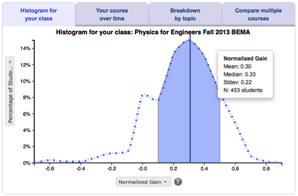Developed by Michael LoPresto and Steven Murrell
| Purpose | To understand the misconceptions around astronomy topics that students hold. |
|---|---|
| Format | Pre/post, Multiple-choice |
| Duration | 10-15 min |
| Focus | Astronomy Content knowledge (common misconceptions on astronomical topics) |
| Level | Intro college |
Sample questions from the AMS:


AMS Implementation and Troubleshooting Guide
Everything you need to know about implementing the AMS in your class.
Login or register to download the implementation guide.
more details
This is the lowest level of research validation, corresponding to at least one of the validation categories below.
Research Validation Summary
Based on Research Into:
- Student thinking
Studied Using:
- Student interviews
- Expert review
- Appropriate statistical analysis
Research Conducted:
- At multiple institutions
- By multiple research groups
- Peer-reviewed publication
The multiple-choice and true/false questions on the AMS were developed from a list of 25 astronomy misconceptions which were based on previous research on misconceptions as well as the authors experience teaching introductory astronomy courses. This list of misconceptions was given to students as a true or false survey. The true/false questions were then converted to multiple-choice questions were the answer choices included the commonly help misconceptions. This multiple-choice version was given to over 400 students at one institution.
References
- M. LoPresto and S. Murrell, An Astronomical Misconceptions Survey, J. Coll. Sci. Teaching 40 (5), 14 (2011).
We don't have any translations of this assessment yet.
If you know of a translation that we don't have yet, or if you would like to translate this assessment, please contact us!
Score the AMS on the PhysPort Data Explorer
With one click, you get a comprehensive analysis of your results. You can:
- Examine your most recent results
- Chart your progress over time
- Breakdown any assessment by question or cluster
- Compare between courses
| Typical Results |
|---|
Typical results from LoPresto and Murrell 2011: True-false version: The 217 students in sections not receiving any special treatment of the misconceptions during instruction increased their average score from 48% to 63% +/- 4% (std. error), g = 0.29 +/- 0.07. The 71 students who were given classroom-response questions increased their average to 68% +/- 4.2% (std. error), g = 0.36 +/- 0.09. Multiple-choice version: For the 285 students in sections with no special treatment of misconceptions, scores increased from 30% to 45% +/- 3% (std. error), g = 0.22 +/- 0.035. The 36 students who were told that all the answers were false averaged 52% on the multiple-choice posttest +/- 3.9% (std. error), g = 0.33 +/- 0.05, whereas the 72 students who were given classroom-response questions increased their average to 64% +/- 3.9% (std. error), g = 0.46 +/- 0.038. |
The latest version of the AMS, released in 2022, is version 2. Version 1 was released in 2011. The only difference between versions 1 and 2 is that in version 1 the answer choices to question 21 skipped option d. Version 2 corrected this. Both versions include a true/false version and a multiple-choice version of this assessment. The true/false version is most useful for educating instructors on common misconceptions their students may have. The multiple-choice version can be given to students to assess their understanding of these common astronomy misconceptions, and assess the effectiveness of your instruction at improving students' understanding of these topics.





